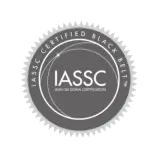
Sales
Join and earn Quick AI Credits!
Sales
Join and earn Quick AI Credits!
At Quickers, we tackle the toughest IT project management challenges, from shifting requirements and technical hurdles to team and stakeholder misalignment. Our expert-led services blend proven methodologies with smart technology to deliver projects that succeed where others fall short.
Our IT project managers are certified professionals with expertise in Agile, Scrum, and PMBOK frameworks.
Our consulting services assist organizations in developing internal project management capacity and, at the same time guarantee the success of the projects in the short term.
We provide end-to-end project management — aligning resources, managing stakeholders, minimizing risks, and ensuring quality. Our committed project managers act as an extension of your team, driving success from kickoff to completion.
End-to-end organizational change management comprising Agile readiness diagnosis, Agile framework installation, team coaching, and performance engineering. We assist companies in making a successful transition to Agile practices without falling into the usual traps of implementation.
All the successful IT projects are initiated with a perfectly clear plan and strategy. Our it management project experts will collaborate with your stakeholders to establish clear goals, outline possible risks, and develop elaborate roadmaps to help remove the element of guesswork.
We do not simply develop project plans; we develop detailed strategies that help align technology projects with business objectives.
We have stakeholder alignment workshops, technical architecture reviews, resource optimization plans, and risk mitigation plans in our planning process.
Most IT projects are derailed by the scope creep and miscommunication, which we avoid by taking the time to plan thoroughly.
Revolutionize your development with our Agile and Scrum advanced implementation services. Having passed the Certified Scrum Master exam, our professionals have led hundreds of teams in Agile transformations, allowing them to reach reduced delivery time, increased quality, and stakeholder satisfaction. We do not subscribe to the one-size-fits-all solutions.
Keep enterprise level project controls using our PMBOK certified project management methodology. Our project management consulting services combine assurance, control and predictability throughout the life of the project with the flexibility required by technology projects.
Keep ahead of the problems that might occur by using our full service monitoring and risk management services. Real-time tracking systems, predictive analytics, and automated reporting are some of the solutions we deploy to keep the stakeholders updated and projects on course. The benefits of our proactive risk management practice are that possible problems are escalated and dealt with prior to affecting the project schedules or budgets. This proactive approach has assisted our customers to enjoy 95 percent on-time delivery in hundreds of projects.
Our it project management service has achieved outstanding outcome in various industries and types of projects. Our reputation has been earned through delivering results and established methodologies that are flexible enough to suit the individual needs of every client.
Our project management team is comprised of only certified professionals having vast experience in real-world projects. All of the team members have the relevant certifications, such as PMP, Certified Scrum Master, ITIL, and Agile coaching. What is more important, they have practical experience in handling the kinds of difficult IT projects that your organization encounters.
Technology projects are highly dissimilar in each industry and standardized solutions usually are unproductive in solving industry peculiar issues. Our it management project experts possess extensive capability in healthcare information technology applications, financial services digitalization, e-commerce platform creation, factory automation system update, and educational technology applications
Our formal change management procedure means that any change is appropriately assessed, authorized, and incorporated without throwing project schedules or budgets out of track. We assist stakeholders to arrive at the effects of changes without sacrificing the flexibility of the project.
We incorporate effective communication measures such as frequent communication to the stakeholders, open reporting, and feedback systems or channels. Our methodology will keep the team members and other stakeholders informed and aligned with the project lifecycle.
We have quality assured processes such as frequent code reviews, automated testing approach and a continuous integration process. We avoid technical debt build-up, and at the same time, we provide delivered solutions that are enterprise standard.
Sophisticated resource planning and cross-functional team designs remove bottlenecks and conflicts. The methodology we use allows the best use of available resources without compromising the productivity and morale of the team.
Comprehensive technology project solutions designed to transform your IT initiatives from planning to successful delivery.
We align tech initiatives with business goals through precise planning, risk identification, and clear roadmaps.
Certified Scrum Masters lead tailored Agile transformations for faster delivery, higher quality, and greater stakeholder satisfaction.
Ensure quality and compliance with enterprise-level project governance, built on PMBOK best practices.
Stay on track with real-time tracking, predictive analytics, and automated reporting to prevent issues before they arise.
Expertise in healthcare, finance, e-commerce, manufacturing, and education, with full awareness of sector regulations.
Our certified professionals provide continuous support and strategic guidance whenever you need it.
Brief explanations of our main abilities, progress with adopting them and what makes them valuable to a business
We can begin project assessment within 24 hours and have dedicated project managers assigned within 48 hours for urgent initiatives. Our rapid deployment capability ensures minimal delay in getting your projects back on track.
Our Agile-based approach is specifically designed to handle evolving requirements while maintaining project control. We implement structured change management processes that evaluate impacts and ensure modifications are properly integrated.
While industry studies show over 70% of IT projects fail to meet deadlines, budgets, or objectives, our proven methodologies and certified project managers have helped over 500 companies successfully deliver complex IT initiatives with a significantly higher success rate through structured planning and risk mitigation.
Absolutely. Our it project management services are designed to enhance and empower your existing teams rather than replace them. We work collaboratively to transfer knowledge and build internal capabilities while ensuring project success.
We implement comprehensive quality assurance processes including regular reviews, automated testing, compliance checkpoints, and stakeholder validation. Our approach ensures delivered solutions meet both technical and business requirements.
Our hybrid approach combines the flexibility of Agile methodologies with enterprise-grade governance and oversight. Unlike traditional waterfall approaches or chaotic Agile implementations, we adapt proven frameworks to your specific organizational culture, technical requirements, and business objectives for sustainable long-term success.
Don’t let another critical IT project fail due to poor management and coordination. Join the organizations that have achieved project success with our proven IT project management services.
Alicante, Spain EU
Firenze, Italy EU
London, Bexleyheath, UK
Karachi, Pakistan
hello@quickers.com









See how Quickers Venture Builder drives innovation with advanced Deep Tech Infrastructure